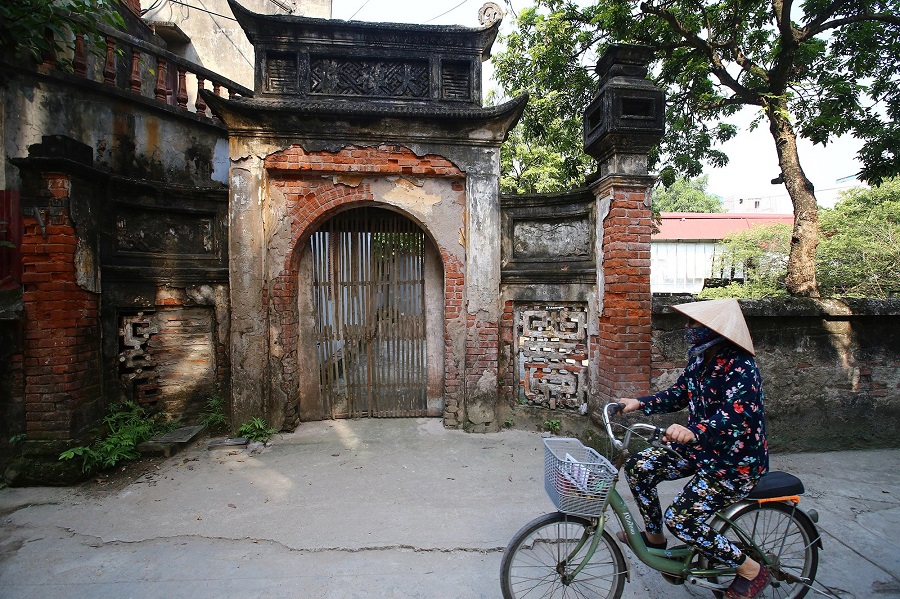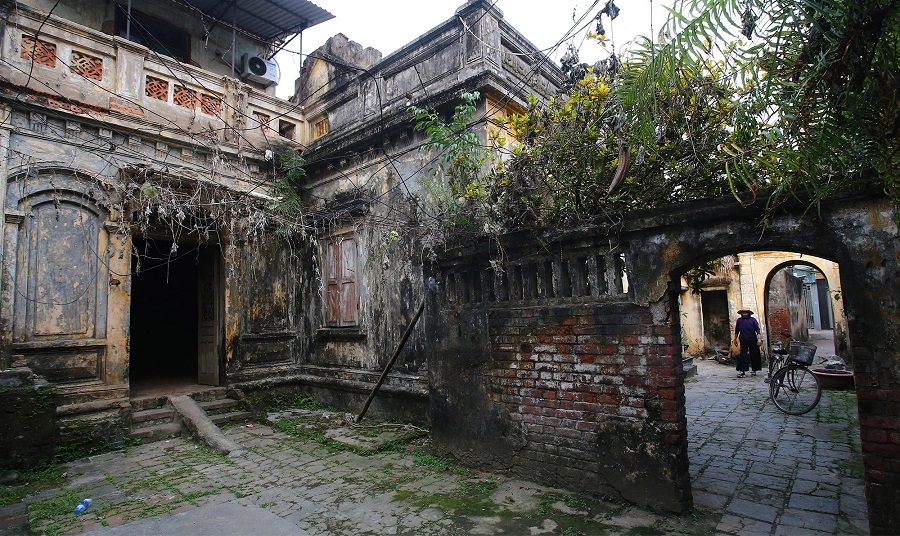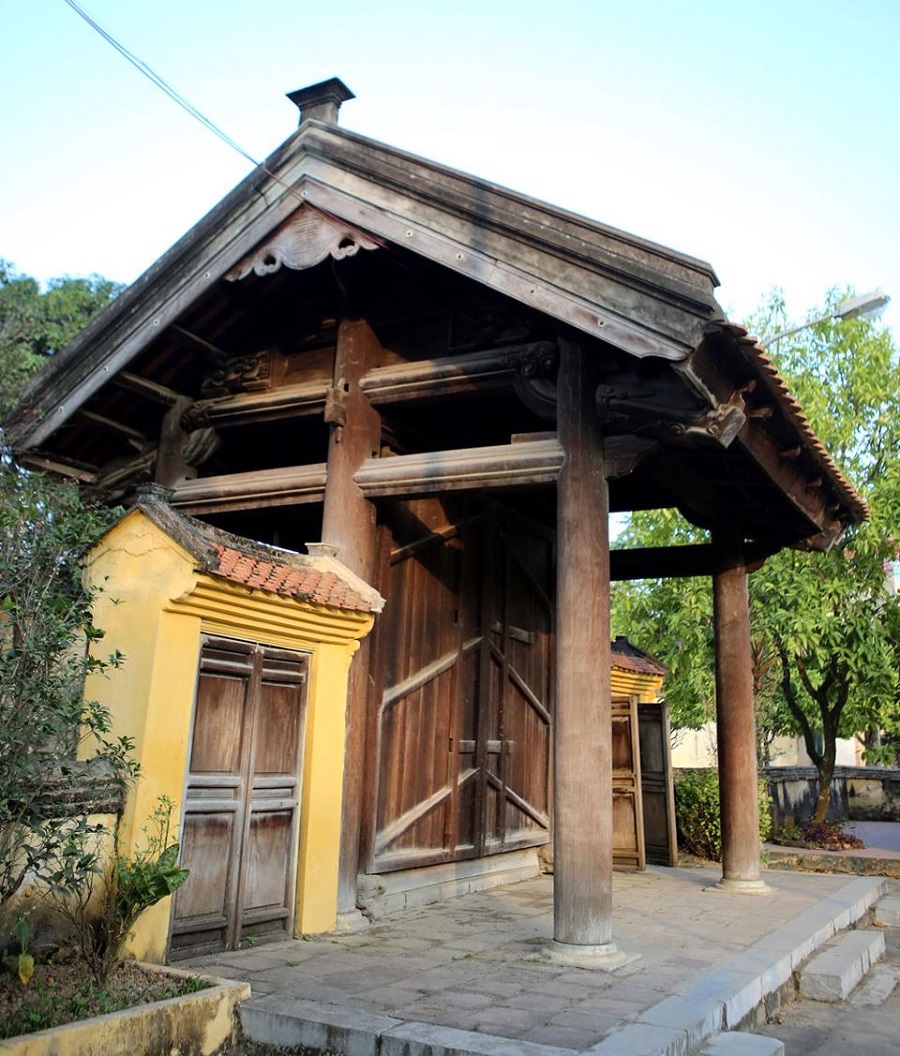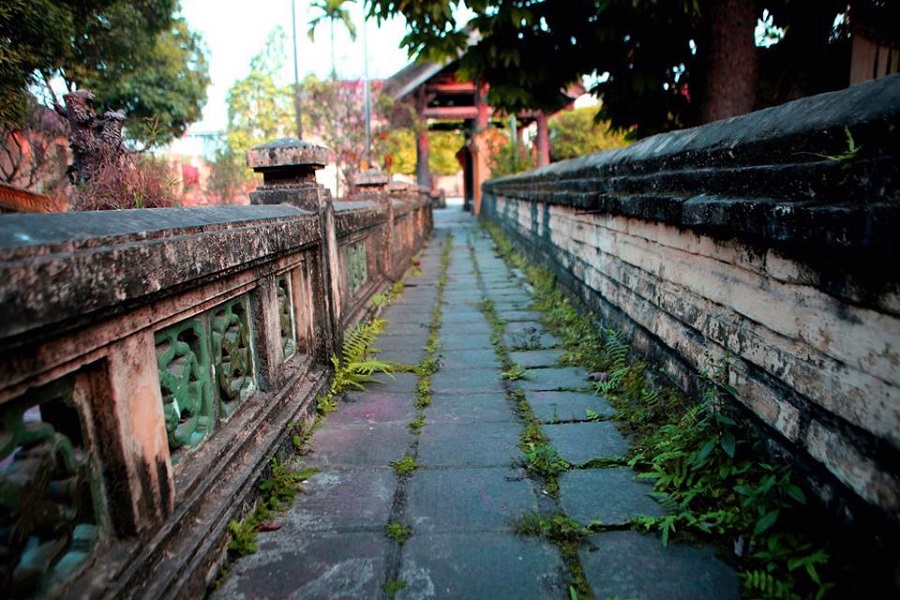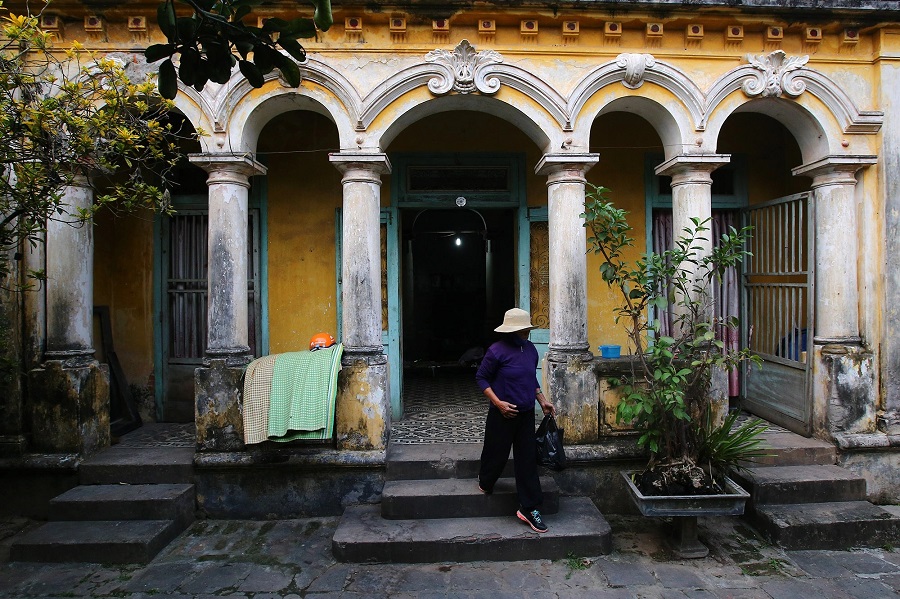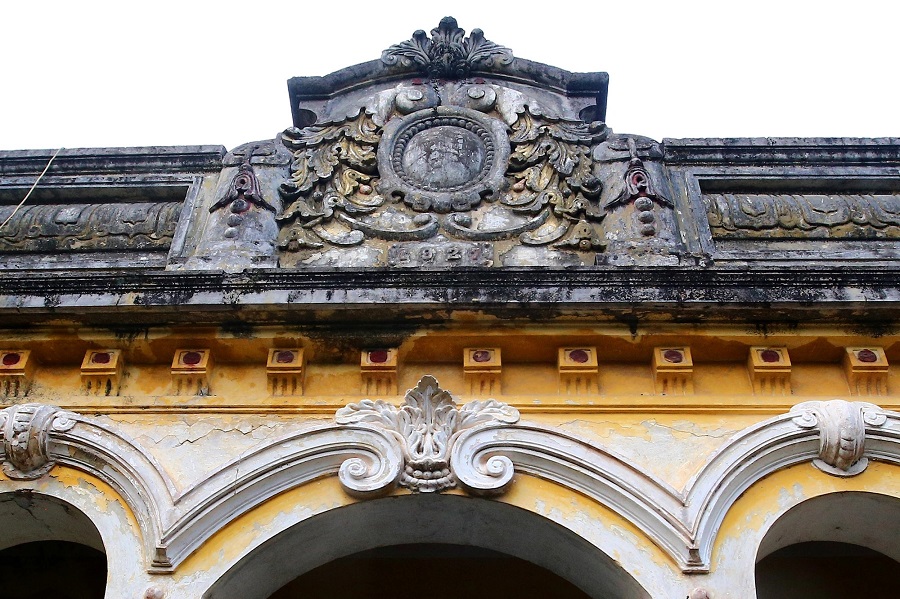Hanoi’s ancient village in the eyes of a foreigner
Through many ups and downs, Dong Ngac Ancient Village has managed to retain its vestiges, demonstrating rich cultural heritage and traditional fondness for learning of the capital city.
Situated some 10 kilometers away from downtown Hanoi, Dong Ngac Village in Bac Tu Liem District is a 1,000-year-old “village of scholars” that has barely changed in centuries. The charming old village has attracted many local and foreign tourists, including CNN’s freelance journalist Ronan O'Connell.
| The beauty of time in Dong Ngac Village or today's Dong Ngac Ward, Bac Tu Liem District, Hanoi. Photo: Huu Nghi/Dantri |
Below are his comments about this village in the article titled “Dong Ngac: Hanoi’s village of scholars” in the column of “Destination Hanoi” on CNN Travel.
An almost intact ancient village
“As Hanoi has expanded and modernized rapidly over the past 20 years, many of its oldest villages have either been erased or gentrified to the point they’ve lost their original character,” he wrote.
But not this one - and this is part of what makes Dong Ngac so appealing when you travel here, according to Ronan’s suggestion. Pretty stone gates mark its borders, timeworn French-Vietnamese buildings line its narrow lanes, street traders peer from beneath conical hats and children play outside its 17th-century Buddhist temple - Tu Khanh.
According to CNN's staff writer observations, spreading across more than three hectares, Tu Khanh is filled with gardens, shaded courtyards, ornate pagodas, and stately pavilions.
Most of the buildings are constructed from dark-colored ironwood, with intricately-carved eaves sitting beneath steep roofs topped by terracotta tiles.
| An ancient house in Dong Ngac Village. The space is almost intact. Photo: Huu Nghi/Dantri |
One of the first monuments visitors will discover inside the temple's sprawling, manicured grounds is a stone statue of a crane standing on the back of a turtle.
Turtles have been cherished by Hanoi residents for centuries. In local mythology, these shelled creatures represent longevity and are viewed as icons of Vietnam's success across its many fights for independence.
This statue is one of more than 50 stone and metal monuments scattered throughout Tu Khanh, which was built in the 1650s.
Among them are three large brass bells cast in the early 19th century and a cluster of steles (stone towers) that are variously dedicated to Buddhist gods and scholarly luminaries born in Dong Ngac.
A history of academic excellence
Despite being tiny, the village is less than one square kilometer in size and home to 1,000 or so people - Dong Ngac has birthed an unusually large number of academic high achievers, including dozens of doctors of literature, according to CNN Travel.
| Ke Ve or Dong Ngac Communal House in Dong Ngac Village. Photo: Ho Ha/The Hanoi Times |
“These include Pham Gia Khiem, Vietnam's deputy prime minister from 1997 to 2011, and Hoang Tang Bi, a revered writer and social activist in the early 1900s,” Ronan found out. To this day, families here compete fiercely against each other to rear the most outstanding pupils.
So valued is Dong Ngac for producing influential scholars that it has been presented with dozens of royal awards, dating as far back as Vietnam’s Le Dynasty period (1428-1788).
In order to get to this chic old village of Hanoi, Ronan suggests to his readers on CNN to travel by taxi. “From Hanoi’s main tourist precinct, the Old Quarter, the village is about 30 minutes away by taxi,” he wrote.
He also suggests on the way to Dong Ngac, travelers should stop off at the historic Phu Tay Ho Temple and Van Nien Pagoda, both of which are on the banks of the large and picturesque West Lake.
History of ‘Village of Knowledge’
| The way leading to Dong Ngac Communal House. Photo: Ho Ha/The Hanoi Times |
Dong Ngac, whose name is Ve Village in ancient time, is an old village situated northwest of the ancient Thang Long Citadel.
Explaining the name “Dong Ngac”, the elderly of the village said that, in the past, children in the village had a great reputation for studying hard. Their voices when reading books resounded all over the village, just like frogs croaking. Then, the village was named “Dong Ech” or “Frog Village”. Under the Tran dynasty (1225 - 1400), the village was renamed Dong Ngach. By the Revival Le dynasty (1533 - 1789), the village was called Dong Ngac and kept this name until nowadays.
The ancient book entitled “Dong Ngac Xa Chi” or a book for historical records of Dong Ngac Village, read that the village is located in a sacred land where a fast-flowing river in a dragon shape runs through. Thanks to its advantageous location, Dong Ngac is also famous as the birthplace of many outstanding scholars. For centuries, the village has had a traditional fondness for learning with many doctorates and scholars.
Phan Phu Tien (1370-1482), was the first Dong Ngac villager to obtain a doctorate in 1396 during the reign of King Tran Thuan Tong (1388 - 1398). During the Nguyen Dynasty from 1802 to 1883, Dong Ngac Village produces 25 doctorates. It is named the “Village of Knowledge” for such reason.
| House of a toff villager of Dong Ngac Village in the ancient time. Huu Nghi/Dantri |
Not only is proud of its tradition of studiousness, but Dong Ngac Village has also many valuable cultural heritages and historical relics. Statistics by the Hanoi Department of Culture, Sports, and Tourism show that Dong Ngac Commune is currently home to 21 relics, including communal houses, temples, pagodas, family churches... and countless ancient houses.
According to experts, the ancient buildings in Dong Ngac have a mixture of Eastern and Western architectural designs. Among the ancient houses built at the beginning of the 20th century in the French architectural style.
These manors are said to be the private homes of Western intellectuals or prosperous businessmen. This is also one of the unique features of Dong Ngac ancient village that attracts many visitors to the place.
| East met West architecture: this ancient house was built in 1927. Photo: Huu Nghi/Dantri |

